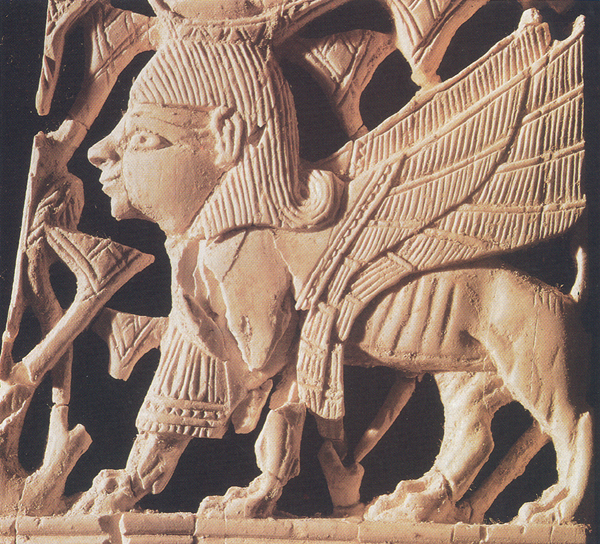Image Details

Erich Lessing
Cherubim decorated the desert Tabernacle that accompanied the Israelites on their way to Canaan (Exodus 36:8) and the Temple of Solomon in Jerusalem (1 Kings 6:29). Hybrid creatures similar to cherubim adorn numerous ancient ivories, including this ninth- or eighth-century ivory from Samaria. Measuring only 3.4 inches high, the delicate plaque depicts a winged cherub striding through a thicket of lotus blossoms. The cherub has a lion’s body and a human face, and wears a flattened double crown of Egypt.
Engraved cherubim covered with gold joined blossoms and palmettes on the walls of Solomon’s Temple. Two immense cherubim, measuring about 15 feet tall, are said to have stood side-by-side, with their wings outstretched, in the center of the dvir (1 Kings 6 23–28). Together, their wings spanned the room from wall to wall. Similar winged creatures have been discovered depicted on royal and divine thrones of neighboring people, such as the Phoenicians. The Solomonic cherubim represented the throne of God the king in his residence, his palace. The cherubim watched over the Ark of the Covenant, which lay under their wings. In foreign temples, treaty (covenant) documents were often stored at the foot of divine statues.
